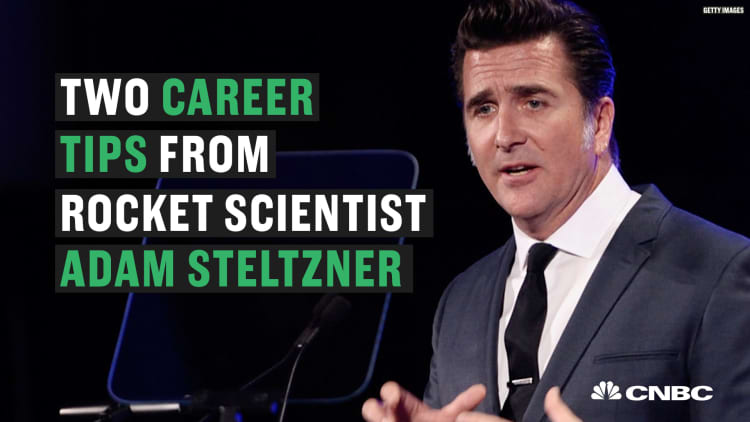In 2017, women in the U.S. workforce represented just 25.5% of computer and mathematical roles and 16.2% of architecture and engineering roles. Retired engineer and NASA astronaut Nicole Stott wants to change that.
After spending 27 years working with NASA, Stott retired from the space agency in 2015. Since then, she has devoted her time to being a full-time painter, who uses her experience in space as inspiration for her artwork.
As an advocate for science, technology, engineering and math education, Stott also uses her platform to talk about the value of diversifying the STEM industry. This year, for Super Bowl weekend, the former astronaut is teaming up with Olay to star in its new commercial, that's inspired by NASA's first all-female spacewalk that took place in October.
Using the tagline #MakeSpaceforWomen, the commercial will feature Stott going into space with comedian and talk show host Lilly Singh and actress Busy Philipps. Their space mission will be overseen by Taraji P. Henson, and Katie Couric will direct them on the airwaves.
"I think what I love most about this is the way Olay is bringing space into the messaging," Stott tells CNBC Make It. "But, doing it in a way that's encouraging young women to be strong."
To create an even greater impact, Olay will also donate one dollar (up to $500,000) to the nonprofit Girls Who Code every time someone tags @OlaySkin and uses the hashtag #MakeSpaceforWomen on Twitter between Jan. 15 and Feb. 3.
Stott, who first joined NASA as an operations engineer in 1988, says a female-led commercial such as this is the perfect representation needed to get more women interested in STEM. "Young women need to know that these opportunities are available to them," she says. "But a lot of it requires them to take the first steps to make it happen."
In her personal life, Stott says, she always knew that she wanted to be an astronaut. But she faced a lot of self-doubt that delayed her decision to actually become one.
"You know, no one ever told me I couldn't do it," she says. "But, it just seemed like, 'Wow, that's what other special people get to do. Why would I ever get to do that?' But, I now realize there are a lot of things you have control over and that you have to take action on."
After voicing her aspirations to mentors and colleagues, Stott says she eventually took their encouragement to heart and filled out the paperwork needed to be an astronaut. Following a highly competitive selection process where she was evaluated based off education, experience and training, Stott became a member of NASA's astronaut class in 2000. She was joined by just two other women and 14 men.
Though she recognizes that the space industry still has a long way to go in terms of diverse representation, Stott says she's proud of the progress the space flight program has made over the years. In fact, NASA's most recent class of astronauts, which also includes two Canadian Space Agency astronauts, almost hit gender parity, with six women and seven men.
"You know we just had the 50th anniversary of the Apollo moon landing, and when you look back at the mission control center and the launch control center during those missions, there was just one woman involved with that," says Stott.
The 1969 Apollo 11 spaceflight is known for its historical accomplishment of landing humans on the moon for the first time. During this mission, there were five women who later received credit for doing behind-the-scenes work to make the job possible. Of those five women, just one, JoAnn Morgan, worked in the control room when the mission launched.
Now, Stott says, there is no longer one token woman working in the mission control center or launch control center during a spaceflight. "We're not thinking anymore, 'Where is that one woman,'" she says, "because we're now looking at this mix of humanity. And, I think it's just a really great example of how we can be building out diverse work forces in other industries as well."
Stott says she hopes her commercial with Olay will inspire even more young women to be astronauts, scientists or engineers in the future. "One of things that I think is having the greatest impact right now on increasing interest [in this industry] is for women in these fields to be out and present for young women to see them," she says. "And that's why I think a commercial like this, that is at an event so visible as the Super Bowl, is really important in showing young women that there are opportunities out there."
Like this story? Subscribe to CNBC Make It on YouTube!
Don't miss: NASA is making a new attempt at an all-female spacewalk this week — here's how it would make history



